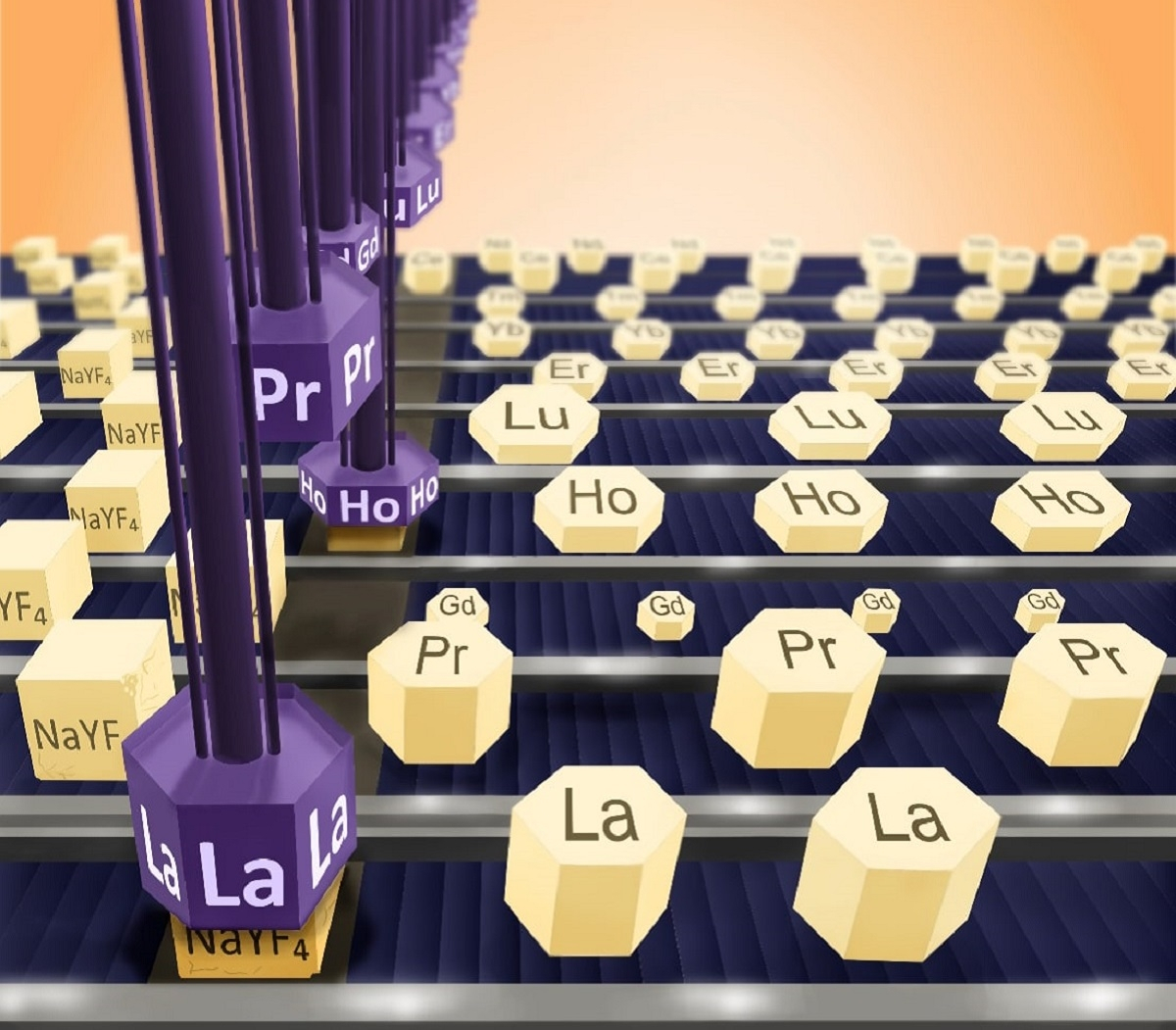St Petersburg University chemists explain the relationship between the composition and properties of nanomaterials for innovative medicine
St Petersburg University scientists have established patterns related to changing of the shape and size of nanoparticles used in theranostics, an innovative field of medicine, by adding various lanthanides to the structure. The use of particles of a certain shape and size is important in anti-cancer therapy and MRI diagnostics. In these fields, it is required to use the smallest particles, since they penetrate cells more easily and are able to move freely through vessels and veins without clogging small capillaries.

Theranostics is a young and actively developing field of medicine that explores the opportunities of creating and using medications that allow for a simultaneous diagnosis of diseases and their therapy, with the help of special combination materials-drugs. The creation of such materials has become possible only in recent years, largely as a result of nanotechnology development. These drugs make it possible to: find in the patient’s body an affected area that requires treatment; deliver the necessary medicine there; and immediately visualise the affected area for the doctor in real-time mode, either by optical spectroscopy or using the widely used MRI method. Scientists note that combination drugs do not have a negative effect on the patient’s body and cause less discomfort during treatment.
The research findings are published in Nanomaterials, a highly-rated international scientific journal. The graphic image of St Petersburg University scientists’ paper is featured on the cover of the journal.
The practical component is crucial for the development of such drugs, but there are also important fundamental issues. One of such issues is the one related to the relationship between the useful properties of drugs and the sizes of micro- and nanoparticles in the form of which drugs are produced.
St Petersburg University scientists have studied nanoparticles based on sodium and yttrium fluorides and rare earth elements, chemically inert and insoluble substances that do not harm the body. Additionally, these elements, as a rule, have a brighter luminescence (glow) and in future can be used as stains for luminescent microscopy, as well as for medical purposes, for example, when conducting non-invasive tumour diagnostics.
During their work, the team of researchers led by Andrey Mereshchenko, Doctor of Chemistry, Associate Professor in the Department of Laser Chemistry and Laser Material Science of St Petersburg University, synthesised several dozen compounds. In each case, they varied the composition of the resulting material by adding various salts of rare earth elements. This was necessary for the accumulation of experimental material for further analysis.
’The purpose of this large study was to search for regularities in the effect of the nature of rare earth elements in the composition of medications on the size of the obtained nanoparticles. To do that, we had to conduct many similar studies with a controllable variation of the composition of particles. The periodic law enables us to predict the properties of still unknown compounds based on the known data on their analogues. We used that approach as our principal theoretical tool,’ Andrey Mereshchenko commented.
The research was done on the equipment of the resource centres of the St Petersburg University Research Park. That made it possible to analyse particles using instrumental methods. Young employees of the research team, first- and second-year students of St Petersburg University, took part in the particle synthesis. The work was carried out within the framework of a Presidential grant aimed at the state support of young Russian doctors of science.
The scientists applied the classical approach of the St Petersburg University’s school of thought in chemistry. That made it possible to find and explain fundamental patterns in the properties of substances using the Periodic Law discovered in 1869 by the famous University scientist Dmitri Mendeleev.
As a result, the scientists managed to obtain particles ranging in size from 80 to 1,100 nanometres. One nanometre is one billionth of a metre. It should be noted that the size and shape of the particles directly depend on the nature of the rare earth ion. This dependence is nonmonotonic. Particles decrease from left to right in the series of lanthanides in the periodic table, from lanthanum to gadolinium (the 57th to the 64th elements of the periodic table) and increase in the second part of this series, from gadolinium to lutetium (the 64th to the 71st elements of the periodic table). All particles are shaped as hexagonal prisms. Their diametre—height ratio also depends on the nature of the rare earth ion that ensures a change in the geometric parameters of the particles when using various components of the drug.
Previously, St Petersburg University chemists synthesised new luminescent nanoparticles to be used in laser microscopy and in diagnostics of various diseases with the use of contrast. These nanoparticles were also created on the basis of rare earth metals, yttrium and europium, with the addition of gadolinium ions.
It was exciting to find out that it is in the case of gadolinium that the particle size is minimal. Gadolinium-based medications are the most promising ones to be used in MRI diagnostics due to their magnetic properties. Drugs with such properties are already produced.
Nikita Bogachev, the main author of the scientific article, Assistant Professor in the Department of General and Organic Chemistry, St Petersburg University
’A decrease in the particle size makes it possible to increase their penetrability into cells with any pore size and thus to apply them to any living tissues,’ explained Nikita Bogachev, the main author of the article, Assistant Professor in the Department of General and Organic Chemistry of St Petersburg University.
Currently, the team continues their work. It is now aimed at optimising the directed synthesis of particles with multifunctional properties. They need to be capable of emitting light after being subjected to UV rays, electromagnetic field and other disturbances (luminescence), and at the same time be applicable as a composition of MRI contrasts.

